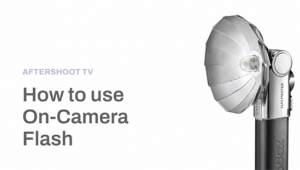Digital Help
Q&A For Digital Photography
Digital Help is designed to aid you in getting the most from your digital photography,
printing, scanning, and image creation. Each month, David Brooks provides solutions
to problems you might encounter with matters such as color calibration and management,
digital printer and scanner settings, and working with digital photographic
images with many different kinds of cameras and software. All questions sent
to him will be answered with the most appropriate information he can access
and provide. However, not all questions and answers will appear in this department.
Readers can send questions to David Brooks addressed to Shutterbug magazine,
through the Shutterbug website (www.shutterbug.com),
directly via e-mail to: editorial@shutterbug.com
or fotografx@mindspring.com
or by US Mail to: David Brooks, PO Box 2830, Lompoc, CA 93438.
"Archival" Disc Storage Media
Q. On page 190 of the June 2006 issue, you indicate that "the Gold/Gold
technology has not been successfully applied to DVD-R." On page 149 of
the same issue there is an article on Delkin's Archival Gold DVD-R media.
An explanation is requested.
David Wheaton
A. Referring to the Delkin ad for their "Gold" DVD-R discs,
if you go to their website and look through it thoroughly you will find that
other than their own testing no claim of archival longevity is made based on
any independent tests on their Gold DVD-R discs. In addition, the "Gold/Gold"
designation given to CD-R discs made by Kodak, Imation, and Mitsui is based
on the fact the protection of a gold layer is applied to both the top of the
disc and the bottom under the dye recording layer. And, Delkin is not specifically
and directly claiming their DVD-R Gold is Gold/Gold.
As I understand the tests applied by Delkin themselves, it involves simulating
normal use over a long period of time by actually reading for an intense period
to a point of failure. To me that only simulates one dimension of potential
aging, and does not account for other kinds of environmental degradation that
determines functional, readable recorded disc longevity.
I am sure the Delkin and also the Mitsui Gold DVD-R are of superior quality
and longevity, but I think I have good reason to remain skeptical that they
will provide real and practical longevity equal to Gold/Gold CD-R discs.
(Editor's Note: To help clarify this issue we contacted
Delkin. Here is their response, edited for space.)
The Gold/Gold terminology was used to describe that type of CD-R media back
in the early days because there were three types of dyes in use, but Mitsui's
patented Phthalocyanine dye was the only one transparent enough to make the
disc look gold from both sides.
The construction of our gold DVD-R media is essentially the same as CD-R. However,
the dye is no longer as transparent, so the disc has a brownish hue because
of the purple/blue dye against the backdrop of gold. There was never more than
one coat of gold, but it is 99.99 percent pure gold. We have performed the longevity
tests according to ISO 19827:2002 and the average estimated lifetimes of CD-R
and DVD-R are 300+ years and 120+ years.
Eric Richter
Marketing Manager
Delkin Devices, Inc.
Using LCD Computer Displays For Digital Photography
Q. I just purchased a Samsung SyncMaster 214T, mainly based on your review in
the May 2006 issue of Shutterbug. I calibrate using ColorEyes and an X-Rite
sensor. I use ink from MediaStreet and profiles from InkjetMall. I have been
trying different calibrations and still cannot get close to WYSIWYG. I tried
calibrating to the screen's native white point, 6700 if I remember correctly,
and to 6500, 5000, etc. I was hoping you had some advice to get me on the right
path. I have also tried, as you suggested, messing with the brightness and contrast
but I am getting nowhere fast.
Gary T.
A. Sorry to hear you are having a challenge adjusting, calibrating,
and profiling the Samsung SyncMaster 214T. If I recall I ended up reducing the
brightness setting about 25 percent and the contrast setting about 60 percent.
I do not have any experience with the ColorEyes software and the X-Rite sensor.
I am not even sure what you have actually supports calibrating and profiling
LCDs, as most older colorimeters and software made to calibrate and profile
CRTs don't work with LCDs. So first of all check that out and be sure
both the colorimeter (X-Rite) and ColorEyes have specific support for LCDs.
Since doing the Samsung test and review I've worked with three more brands
and models of LCDs and have had no difficulty getting them adjusted, calibrated,
and profiled. Those tests have shown me that the calibration process is quite
easy if you have the right support. I am using the ColorVision Spyder2PRO colorimeter
and the ColorVision Spyder Version 2.2 software.
I begin by lowering the LCD brightness with the controls on the display. This
is to eliminate the high default brightness burnout of highlight detail. Then
I set the calibration target value aim points in the ColorVision Spyder software
to a color temperature of 6500K and a gamma of 2.2, as well as a white point
brightness of between 100 and 120 cd/m2. Then I just let the calibration and
profiling process actually make and set the display to those values. This works
and provides both good perceptual screen values for color correction and precise
print color matching ith both an Epson R800 and an R2400 printer.
I am able to validate this by reproducing the same files using another computer
system that is running a Sony G520P that is still in excellent condition and
calibrated and profiled with the same software and colorimeter. So I know it
can be done with the display you have.
- Log in or register to post comments


































